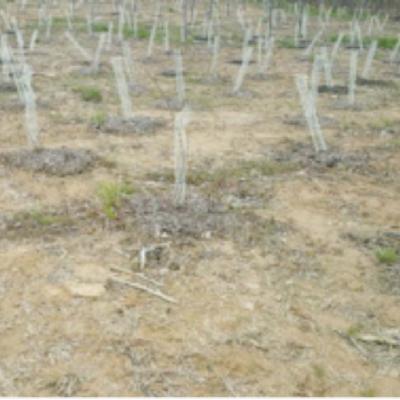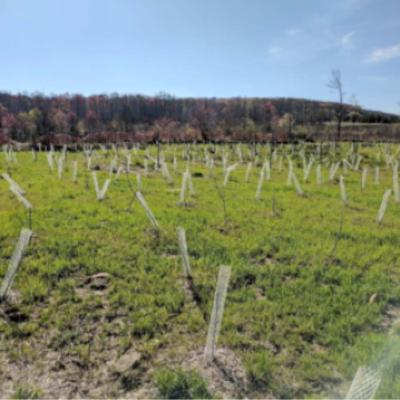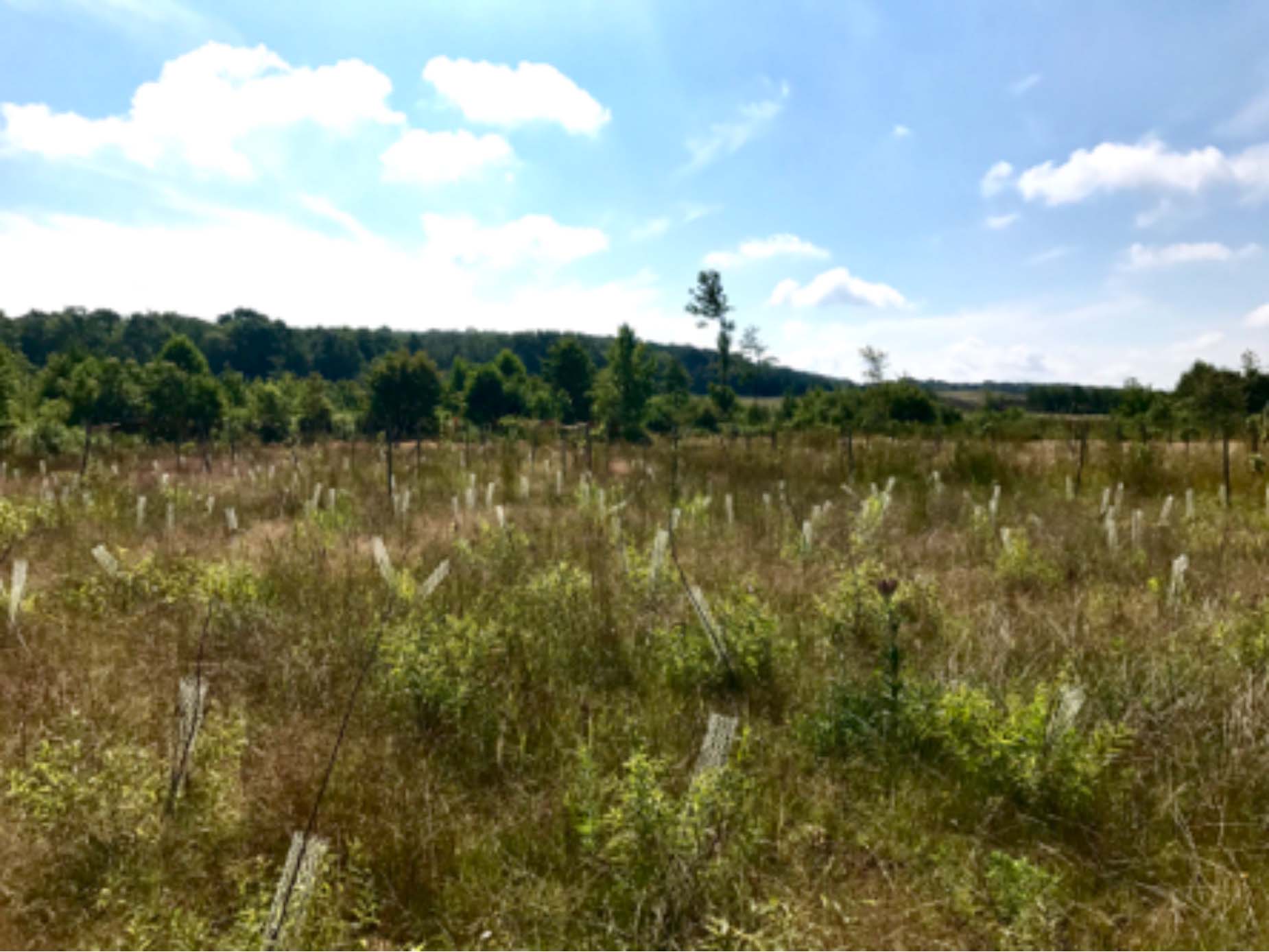ISSUES
• Topsoil removed and not replaced on site.
• Wetland native seed mix and trees.
• Remaining soil had 1% organic matter, pH range of 4-5.
• Vegetation previously failed and was replanted 3 times.
PROBLEM
Because a plan had not been in place for preserving the topsoil , the soil on the site was lacking the nutrients needed for successful plant growth and sustainability. Willows were dotted around the site, but struggled due to the poor quality soil. PennDOT had seeded the area three times with inadequate results. The Engineering Architecture Design Services (EADS) Group asked Triton Environmental of Pittsburgh, PA for assistance.
After a soil test, the site was found to be significantly lacking in nutrients. To further complicate matters, the organic composition of the soil was less than 1% and the pH was between 4 and 5. The obvious solution was to amend the topsoil with the nutrients and organic matter required to make it sustainable for re-establishing vegetation. The site specific challenge to this plan was how to apply of the needed amendments. The first thought was to import mushroom compost, which would have to be tilled into the soil. This presented a challenge as there was limited access for equipment to the area. To till the material into the soil around the existing willows would have been labor intensive and risked damage to the trees.
SOLUTION
Upon receiving the soil test results, the team at Triton Environmental recommended The Biotic Soil System featuring Biotic Earth. In addition, we used pH adjusters and fertilizer. The Biotic Earth was utilized to provide the necessary organic matter to the soil. All the amendments, except for the fertilizer, were applied topically through a hydroseeder with no tilling required. A hose was run from the hydroseeder over 100 feet away, taking care of the accessibility issues. This method allowed complete coverage of the area without having the need for equipment that could damage the existing plantings. The fertilizer was applied by hand separately.



RESULTS
The initial application, which was applied in late October, was germinating within two weeks. Even more impressively, the area was fully vegetated by early spring. The mix of amendments provided the necessary nutrients to establish and sustain vegetation, with an efficient application process. This is a process that can be used on even the most challenging sites. The next summer the vegetation far exceeded areas not treated with Biotic Earth. Survivability of the willows and the native seed mix was exceptional on a site with repeated failed vegetation. The site was such a success a larger section with Biotic Earth is planned for later 2017 or early 2018.




